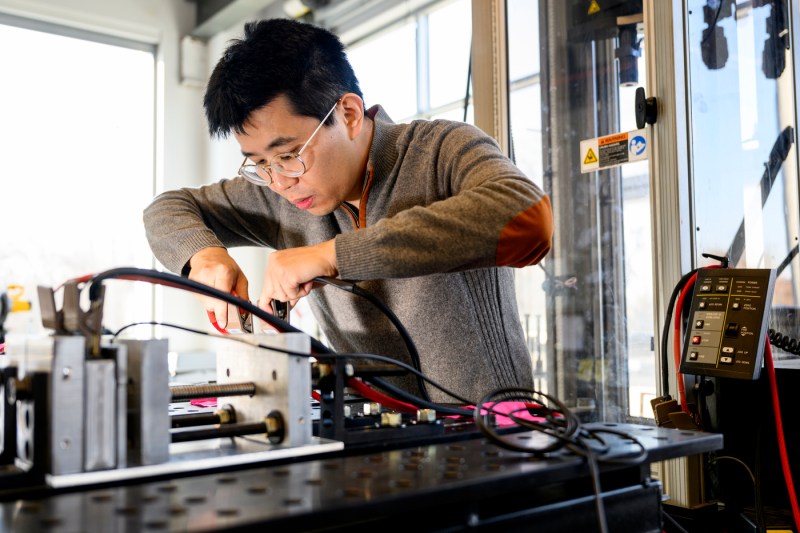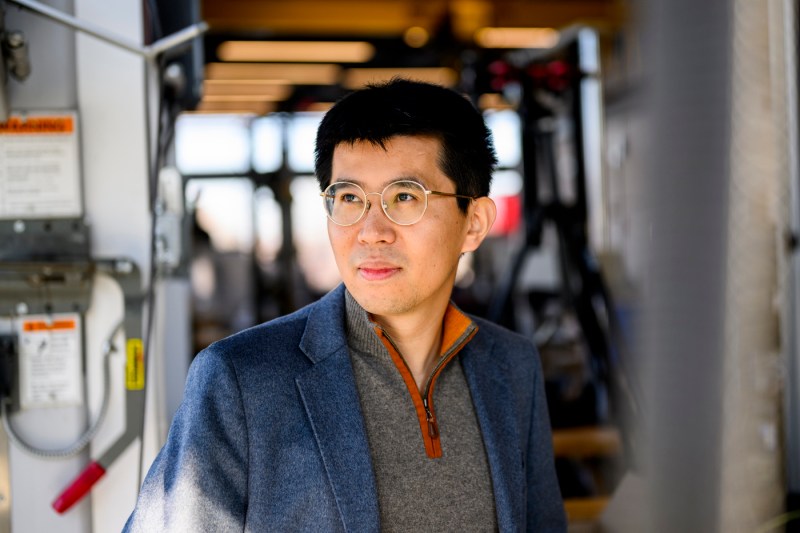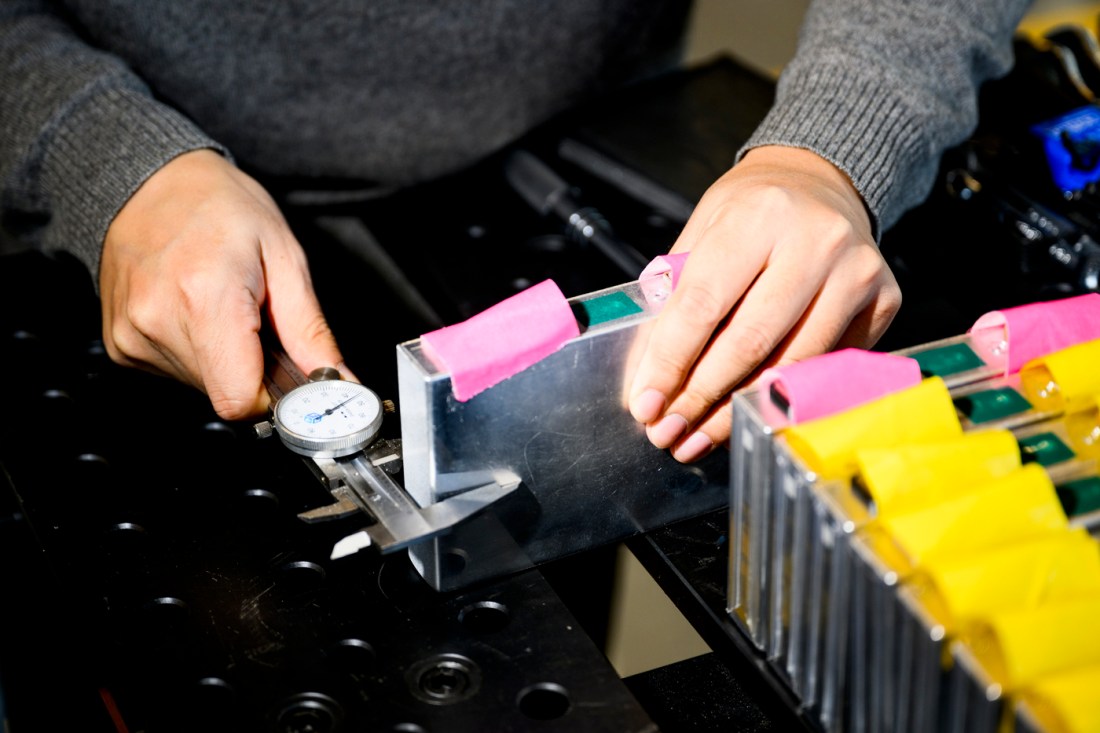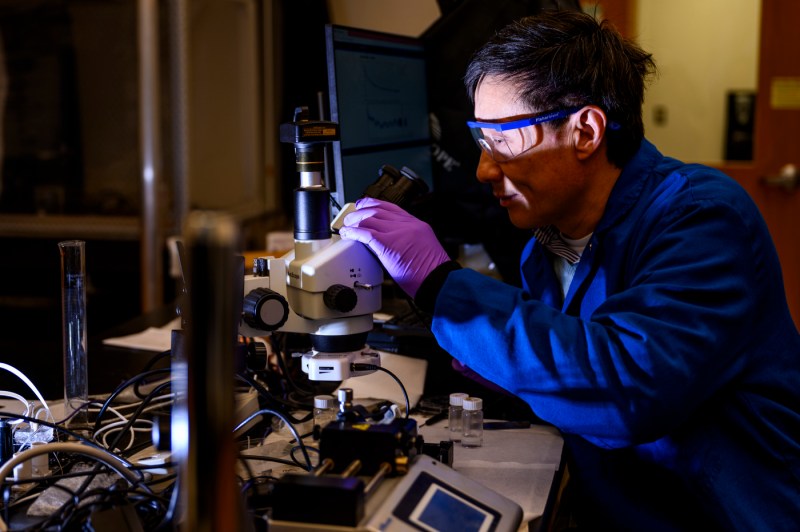Why Teslas froze in Chicago’s cold snap, and how battery research at Northeastern might prevent future freezes

As if the chill isn’t bad enough for humans, Tesla owners near Chicago this winter learned that subzero temperatures aren’t too good for electric vehicle batteries either, with many motorists stranded in dead cars and/or awaiting extra long charges.
Northeastern University battery experts Juner Zhu and Hongwei Sun are working to prevent similar occurrences in the future — focusing, respectively, on what happens when batteries are exposed to extreme cold temperatures, and developing a temperature management system to regulate battery temperatures.
“Keeping batteries in the right temperature — that is a very big task for everyone in this community,” Zhu says of the scientific community researching batteries. “Cold weather is actually very bad for batteries.”



Zhu is an assistant professor of mechanical and industrial engineering at Northeastern and the co-founder and executive director of the Center for Battery Sustainability, launched by Northeastern and the Massachusetts Institute of Technology. His lab studies battery performance in extreme cold temperatures — in fact, equipment enables him to expose batteries to the minus 70-degree Celsius temperatures that will be necessary for battery systems in Arctic conditions or even lower temperatures in outer space for trips to Mars.
Zhu explained the basics of a lithium ion battery and what happens to it when it’s cold.
In such a battery, lithium ions move between an anode and a cathode that are separated by an electrolyte and are each connected to an electric circuit. This movement results in electrons. When the battery is discharging, the lithium ions move from anode to cathode and the electrons move through the attached circuit and power a device. When the battery is charging, the lithium ions move in the opposite direction, resulting in electrons that repower the battery.


But in cold weather, the ions can’t move very easily, Zhu says.
Moreover, if the lithium ion is given an electron and it can’t readily move, then a side chemical reaction can occur, Zhu says. This side reaction is called “plating,” Zhu explains, as the lithium ion becomes a metal that — if built up — can penetrate the battery and cause a fire. Plating is also “almost irreversible,” decreasing the amount of lithium ions that can be used to generate electricity, Zhu says.
Zhu’s research focuses on this plating process, including how it happens and how to detect it.
Featured Posts
“It’s a very big challenge, I think,” Zhu says.
It’s also crucial work if we want to establish microgrids — or mini power plants — for communities in harsh, cold environments, or if we want to power equipment in space or on Mars, Zhu explains.
But it’s not just extreme cold that is dangerous for a battery. Extreme heat can be a problem, too, because a battery produces its own heat.
Sun, professor of mechanical and industrial engineering at Northeastern, is developing a temperature management system for lithium ion batteries, among other devices. He explains that lithium ion batteries work in an optimum range of between 15 degrees to 35 degrees Celsius (59 degrees to 95 degrees Fahrenheit). Above or below that range, and the efficiencies decrease.
“If you cannot maintain the temperature of the battery, eventually a battery will explode or another bad thing will happen,” Sun says.
The hybrid system shows promise, Sun says, as tests have shown the batteries stayed within the optimal temperature range even during very fast charges and discharges.
“This way we can maintain temperature within the optimal range throughout the cycle,” Sun says.
But it might be a while before the system is any help to Chicago’s Tesla drivers; Sun’s work is being developed for use in U.S. Navy battery-operated power storage systems.
Which returns us to Zhu. Asked what Tesla and other electric-vehicle drivers could do during cold weather, Zhu says it’s a topic to which he and his wife have given some thought.
“The best available solution we can think of is parking in a garage,” Zhu says. “But we stay optimistic about new battery management technologies being developed to make batteries comfortable even in extreme conditions.”











